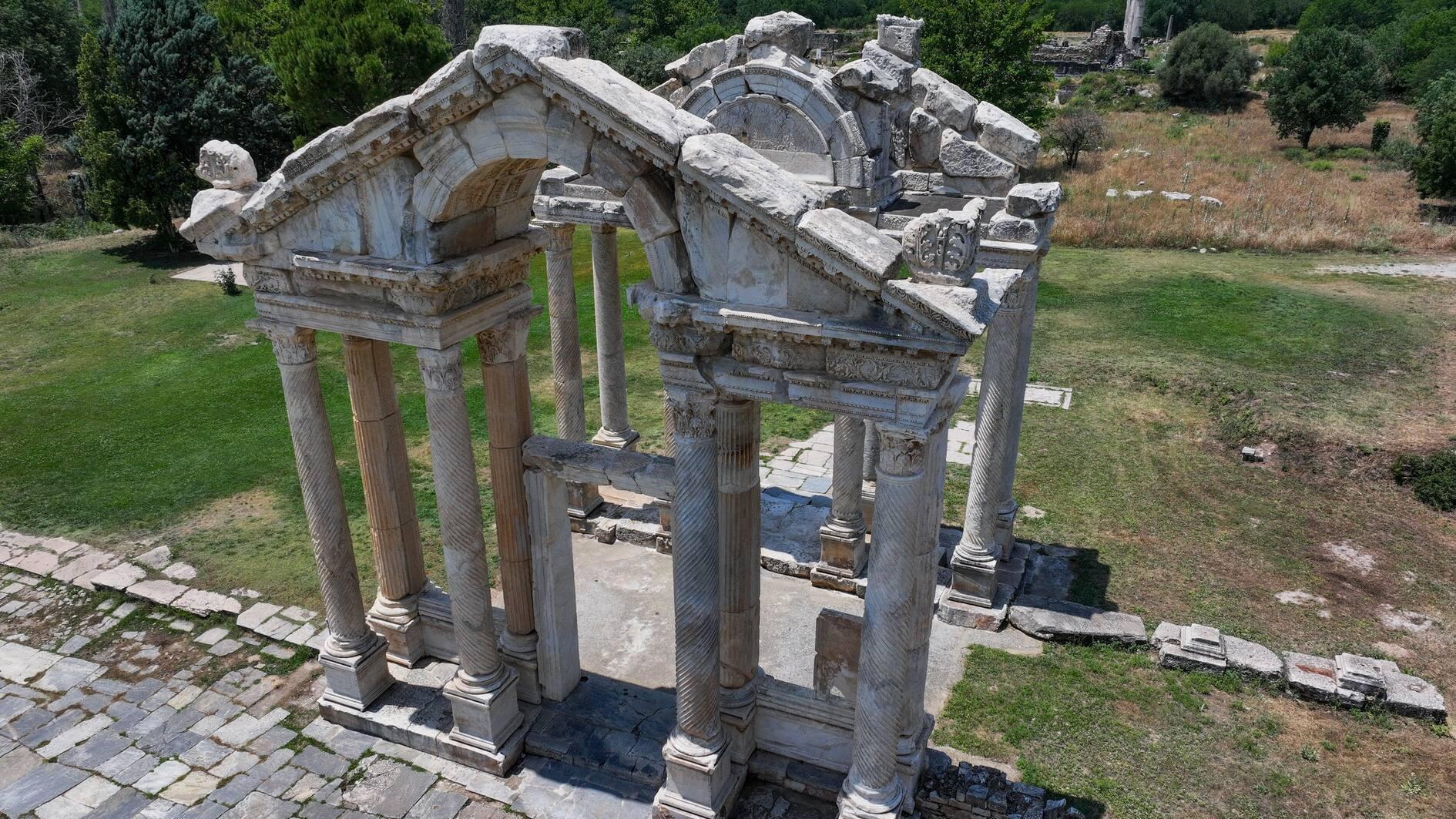
Aphrodisias, an ancient city in the western province of Aydın dedicated to Aphrodite, the goddess of love and beauty, is being restored to provide visitors with new experiences, including night-time museum visits, a redesigned welcome center and enhanced landscaping.
Listed as a UNESCO World Heritage Site, the ancient city is located in the Karacasu district and boasts a history stretching back nearly 2,500 years. It bears traces of Hellenistic, Roman, Byzantine, Anatolian beyliks and Ottoman civilizations, making it a multi-layered archaeological gem.
Excavation efforts at Aphrodisias gained momentum last year after the site was included in the Turkish Culture and Tourism Ministry’s “Heritage for the Future” program, allowing work to continue throughout the year. In addition to archaeological and restoration efforts, the program includes the construction of a new visitor center, comprehensive environmental landscaping and the introduction of night museum access.
A design for the new welcome center has already been completed and the tender process is underway. The facility is expected to be completed by the end of this year. The city will also see new walking paths and improved social areas. Meanwhile, the Aphrodisias Museum is being structurally reinforced, with work scheduled for completion by 2027. Night-time access is planned to begin in 2026, following the finalization of related tenders.
The goal of the overall project is to boost both visitor numbers and satisfaction.
A three-phase plan
Professor Bahadır Duman, project coordinator for Heritage for the Future Aphrodisias and faculty member of Pamukkale University’s Department of Archaeology, said the ancient city is undergoing a comprehensive transformation.
“The development follows a three-phase plan that includes excavation, restoration and infrastructure improvements,” Duman told state-run Anadolu Agency. “Projects such as the welcome center, landscaping, night museum access and strengthening of the museum are all integral components of this plan.”
He highlighted the significance of ongoing excavations at the Ottoman Bath and the Tetrastoon, saying these areas are expected to open to visitors later this year following restoration.
“The Ottoman Bath is particularly important,” Duman noted. “It shows that Aphrodisias remained continuously inhabited through the Ottoman period, not just the Roman era. We aim to make this multi-cultural layer visible after excavation and restoration.”
Restoration also continues at the colonnaded galleries and marble flooring of the agora next to the theater, Duman added.
He revealed that a row of connected shops was discovered in the eastern gallery of the Tetrastoon last year, with two rooms featuring floor mosaics of geometric and botanical motifs.
“These mosaics are currently being restored and will be opened to the public once completed,” he said.
Excavations and restorations are also ongoing at the Theater Bath, located near the ancient theater and built in the second century B.C. Duman said the structure was used until the sixth century and originally consisted of nine large rooms including cold, warm and hot bathing sections. Some modifications were made in the 4th century.
“We are focusing heavily on this area,” Duman said. “In addition to excavations, we aim to bring this important structure back to life through restoration.”